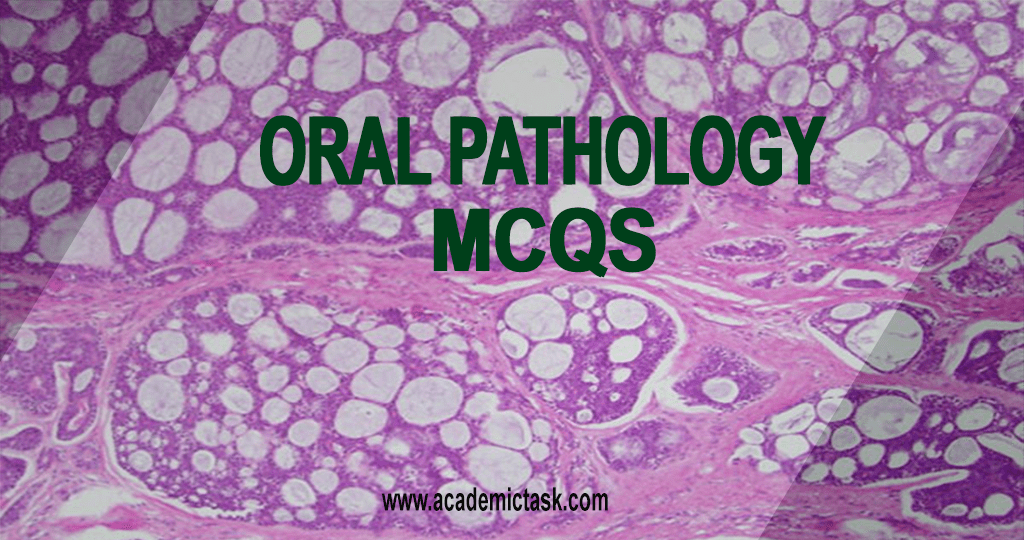
The mouth is an important organ with many different functions. Oral pathology refers to the diseases of the mouth, jaws, and related structures such as salivary glands, facial muscles, temporomandibular joints and perioral skin. The specialty oral pathology is concerned with the diagnosis and study of the causes and effects of diseases affecting the oral and maxillofacial region. Multiple choice questions (MCQs) tests are the preferred format for an accurate and comprehensive assessment of students’ ability to think objectively and critically. Academic tasks provide 2000+ oral pathology MCQs with answers and detailed explanations. All these MCQs are chosen from trusted and best reference books on Oral Pathology. These Pathology MCQs are also helpful for the preparation of interviews, entrance examinations, other competitive examinations, and certifications for all Experienced, Freshers and Students. Also, check MCQs on Oral Anatomy here.
1.Adenomatoid odontogenic tumour is characterized histologically by:___________?
A. Polyhedral epithelial cells
B. Tubular / duct like cells
C. Stellate shaped cells
D. Stratified squamous epithelial cells
2. The Pathogenesis of Periapical Cyst is___________?
A. Increased pressure within the cyst
B. Immune mediated bone destruction
C. Proliferation of epithelium
D. None of the above
3. A six year old child patient has blue-dome shaped swelling in posterior mandibular region, what will be the treatment plan?
A. Reassure the patient without any treatment
B. Excise the lesion
C. Marsupialization
D. Surgical Excision
4. Multiple bilateral dentigerous cysts are seen in:___________?
A. Down’s syndrome
B. Maroteaux lamy syndrome
C. Teacher collin syndrome
D. Gorlin Goltz syndrome
5. COC is now called as:___________?
A. Odontogenic ghost cell tumor
B. Dentinogenic ghost cell tumor
C. Keratcysticodontogenic tumour
D. A & C
6. Facial nerve paralysis is common with:___________?
A. Pleomorphic adenoma
B. Epidermoid carcinoma
C. Warthin’s stumour
D. Lymphoepithelial carcinoma
7. The most aggressive and destructive cyst is:_____________?
A. Periapical cyst
B. Dentigerous cyst
C. Globulomaxillary cyst
D. Nasopalatine cyst
8. Standard treatment of ameloblastoma:
A. Segmental resection with 1 cm of normal bone
B. Enbloc resection
C. Enucleation
D. Enucleation with cauterization
9. The most common odontogenic cyst is:____________?
A. Primordial cyst
B. Dentigerous cyst
C. Radicular cyst
D. Mucocele
10. Cyst arising from dental lamina:___________________?
A. Radicular cyst
B. Paradental cyst
C. Eruption cyst
D. Glandular odontogenic cyst
NOTE
IF YOU THINK ANY OF THE MCQ ABOVE IS WRONG.
PLEASE COMMENT WITH CORRECT ANSWER AND ITS DETAIL EXPLANATION IN COMMENT BOX.
THANK YOU
